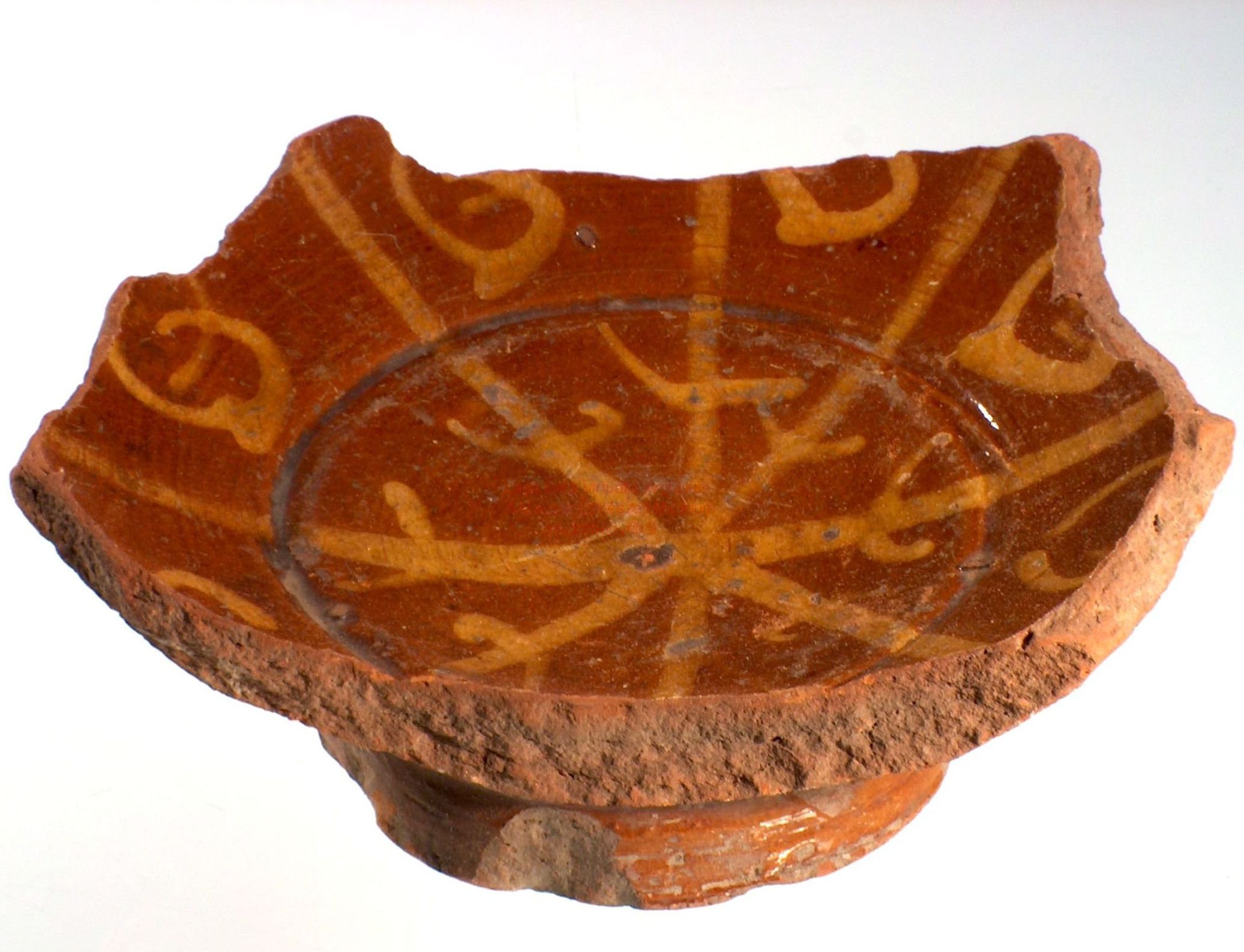The Hungarian Museum of Architecture acquired a set of ceramic fragments from Lajta’s widow in 1973. The collection included about thirty larger and slightly fewer small, 1-2-centimetre-wide pieces. It is not documented how Lajta got into possession of these items. His only documented journey outside Europe during his study trips of 1900–1901 was his short trip to Morocco, where he took the crossing from Spain. The items he brought back and his later recollections, however, suggest that he had also been to Egypt and Syria. Whether or not he had travelled to the valley of the Nile, it is far more likely that he acquired these ceramics later, from a larger collection.
The collection is mostly made up of medieval Egyptian and Syrian pottery fragments, and a few items that might well originate outside Egypt but were possible to come by in the 14th-15th century Egypt. The collection of fragments is closely connected to the similar but incomparably more extensive ceramic fragment collection acquired by Miklós Zsolnay during his trip to Levant at the turn of 1887 and 1888. During Zsolnay’s stay in Egypt, the person supervising the Egyptian Vicekingdom’s antiquities from the Muslim era was a Hungarian architect, Miksa Herz (1856–1919). It might have been him who called the old style fan but ever market trend aware Zsolnay’s attention to these ceramics. He was the travel guide of Hungarians visiting Egypt and he was in a position to hand out liberal amounts of ceramic fragments as gifts to his guests because these would be lying around by the tens of thousands on the rubbish heaps of Fustat, south of central Cairo.
Hungary’s current inventory of Egyptian ceramics is probably a result of Zsolnay’s field trip and it was from this collection that some smaller sets of items might have been acquired by artists in connection with Lechner’s circle or with the Zsolnay Ceramic Manufacture. In 1960 the Museum of Applied Arts bought ceramic fragments from Fustat from Ferenc Vámos (author of monographs on Lechner’s and Lajta’s oeuvre) which documentedly come from the Zsolnay collection. Thus medieval Egyptian pottery was possibly known to the Hungarian architects of the turn of the century – yet it had no tangible influence on the Hungarian architecture of the period.
Iván Szántó




















